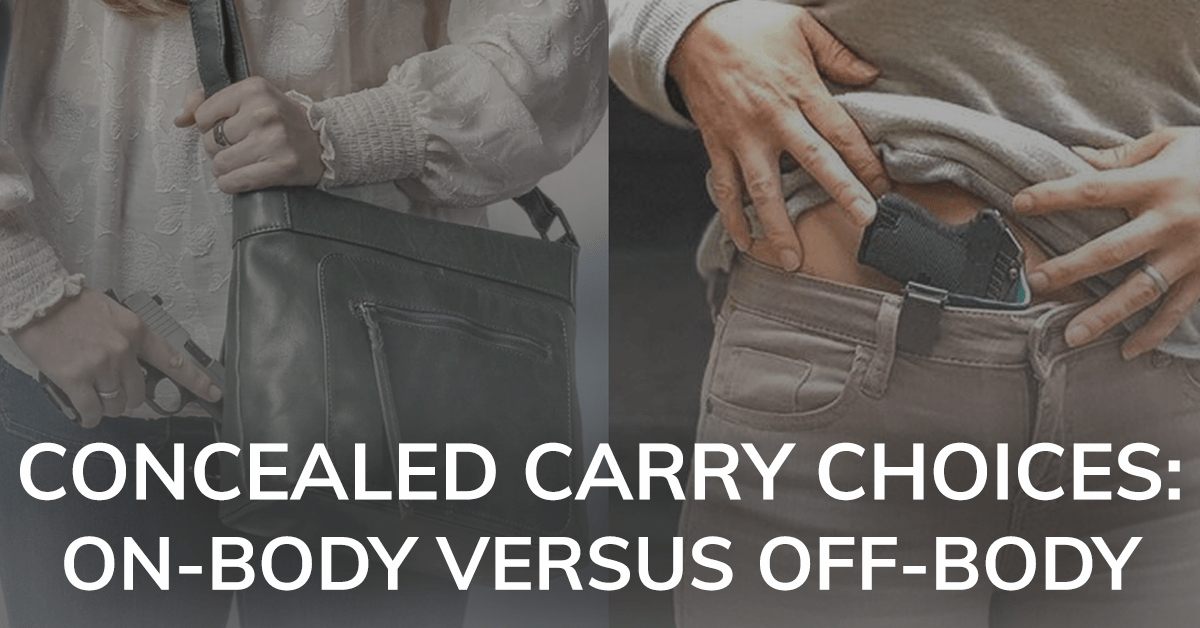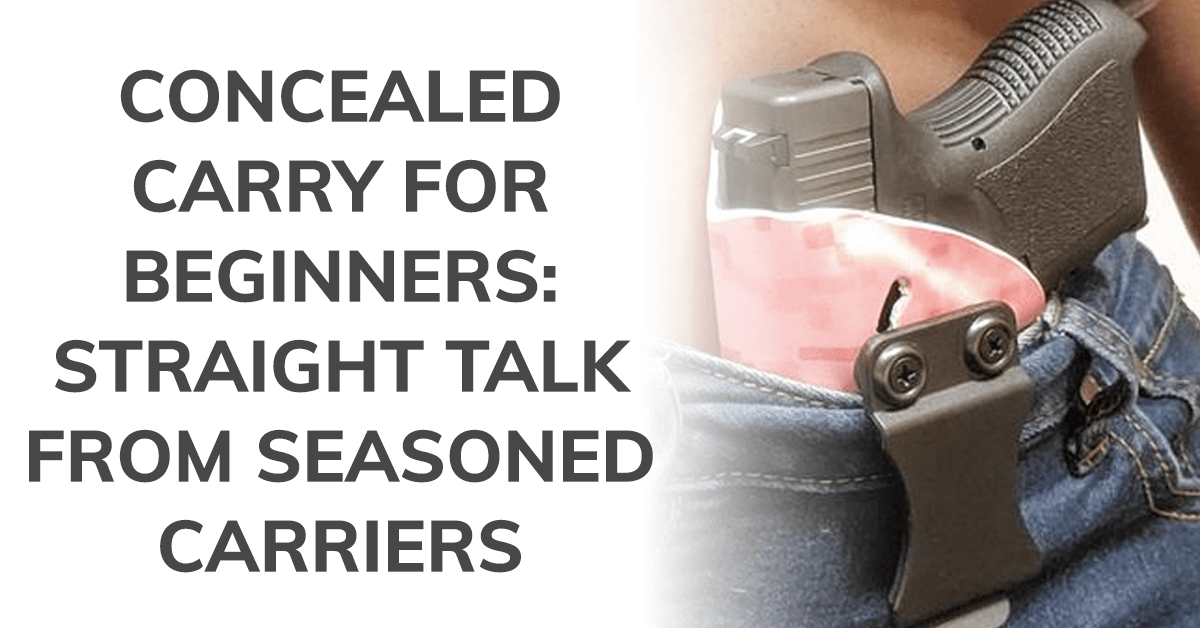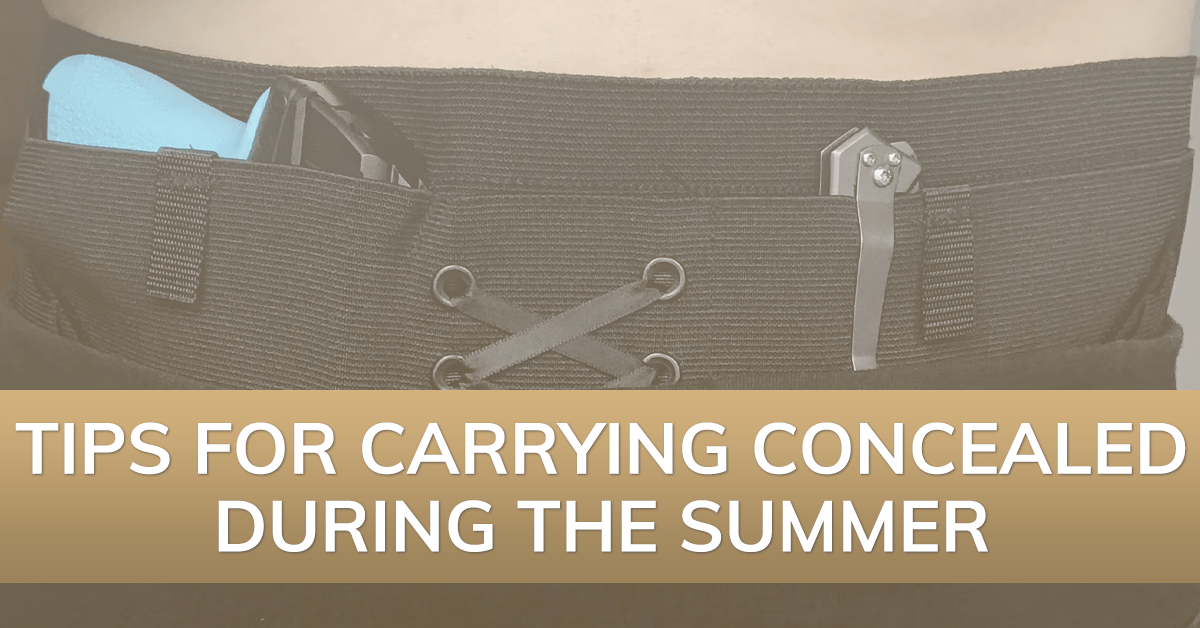Your Cart is Empty
Orders Over $100 Ship FREE (USA)!
Orders Over $100 Ship FREE (USA)!
CONCEALED CARRY
(Apparel with holster pockets or concealed-carry features)
(Apparel with holster pockets or concealed-carry features)
PARTS & GEAR
RANGE STYLE
Gift shopping & not sure about size or style? Give a gift card instead!
Gift shopping & not sure about size or style? Give a gift card instead!
GIFT IDEAS
The entire site is full of products that make great gifts, so browse all of our collections! Still not sure? Give a gift card!
The entire site is full of products that make great gifts, so browse all of our collections! Still not sure? Give a gift card!
EXPLORE
Thanksgiving Deals and Chances to Win! Item you want not on sale? Use code BFCM24 to save $5 on $30+ orders.
Concealed Carry for Women: Where Should You Start?
5 min read
The number of women starting their concealed carry journey is on the rise. According to a recent study, this year, women are just over 29% of the carry permit holders in the 15 states that report data by gender. That's a 28% increase over 2021. Carry permit numbers also grew more than 115% faster for women than for men.
With violent crime going up over the last year, you may be thinking about carrying a gun for the first time in your life. Making the decision to carry a firearm is a big deal. It's not something to enter into lightly, as the consequences of your decision can be life-changing.
If you're thinking about carrying a gun for self-defense, there are several things you need to consider before you start. It’s not just about the firearm—it’s about you and your safety. You need to decide whether or not concealed carry is right for you, and if so, how best to do so safely.
If you're ready, it's important to plan your journey carefully. This guide will help you understand what you need to know about carrying concealed and how to move through each part of the process. Here are the steps you should take if you want to carry a gun for self-defense.
Step 1: Consider the personal and practical implications of carrying a firearm
Deciding to carry a gun doesn't start with running out and buying a bunch of gear and a new gun, it starts with sitting down with yourself and thinking through the realities of being a concealed carrier. It's important that you make this decision with a full understanding of the potential implications, which include the possibility of ending someone else's life.
Ask yourself these questions — are you proficient with a firearm? Are you willing to take on the responsibility of carrying around a gun all day? Would you be able to harm someone who is trying to hurt you to protect yourself and possibly your loved ones?
It can be stressful to think about these things, but it's important to have this sorted out before you actually start carrying. If the answer to any of these questions is no, you may not be ready for concealed carry.
Step 2: Know the law
Learn the concealed carry laws in your state, city, and local area. About half of the US states require a permit to carry, while the other half have enacted "Constitutional Carry," which means no permit or registration is required to carry a concealed firearm. There's no consistency in gun laws from state to state, so you need to study the laws in your immediate location. You can find the most up-to-date information at handgunlaws.us.
In addition to knowing your local and state laws, you'll need to understand federal firearms laws. These laws don't change as much as state laws, so you don't need to study them as often. But it's still important to be aware of federal firearms laws and know how they apply to you and your situation.
Step 3: Decide how you're going to carry
The next step is to decide how you'll carry your firearm. You can always change how and where you carry down the road, but you'll need to start with a basic plan. Your decision on how to carry your firearm should be based on several factors. These include your lifestyle, your body type, and the clothing you wear. Choosing a carry style that is right for you will make all the difference when it comes time to conceal a gun under your clothes.
Your holster needs to be comfortable and easy to use, but also be designed for your specific firearm. There are two primary types to consider — on your body or off body in a concealed carry purse. If you choose on-body carry, decide if you want a traditional inside-the-waistband holster or an alternative style holster like a belly band, corset holster, or using holster-integrated clothing like leggings designed for concealedcarry. You'll then need to figure out where on your body to place your holster and gun. You have a lot of choices, so we recommend reading our guide to understanding waistband positions.
Step 4: Choose the Right Gun
Now that you know where you'll carry, it's time to find the right gun. Not all handguns are designed to be used for concealed carry, so it's important to choose one that will work well with the method of concealment you've chosen.
The best way to choose a firearm is by getting your hands on them. We recommend going to a range that rents firearms and trying several out to see what feels best to you. Once you’ve found the gun that feels right, make your purchase.
Step 5: Get Proper Concealed Carry Training
The importance of training cannot be overstated. Even if you have been shooting for years at the range, perhaps even competing, there are skills specific to concealed carry you need to learn. A good place to start is with a concealed carry course. There are many of them available, but we recommend taking one from a reputable instructor in your area. These courses will not only teach you about firearm safety and handling protocols but also how to draw from concealment, proper trigger management, and other tactics specific to concealed carry.
Step 6: Practice carrying your gun
The next step is to practice carrying your gun. This is something you can do by wearing your unloaded gun and holster around the house (triple check before doing this to make sure it's not loaded). This will help you get used to the feel of having a firearm on your body and how it affects your movements. You’ll also want to practice drawing from concealment while wearing different types of clothing so you can get used to how it feels. We recommend using dry fire practice to speed up the process, here's our guide to getting started with dry fire.
Once you feel comfortable with your gun on your body, you can start carrying it with you outside of the house. Don't feel like you have to rush to start carrying — take your time and get used to the feel of having your gun on you before attempting to carry it in public.
Step 7: Work on your shooting skills
Regular live fire shooting practice is the only way to improve your skills and make sure you're ready for a real-world situation. Shooting skills will degrade quickly if you don't practice them, so you need to head out to the range frequently.
Training will also help you avoid being in a situation where you have to think about what to do next, which can be detrimental to your safety. When you're trained, your body can simply react to the situation without having to think about it first.
Overall, the decision to carry a concealed weapon is a personal one. Anyone considering concealed carry (man or woman) should carefully weigh the potential benefits and risks. The decision to carry a concealed weapon is a personal one, and it should be made after careful consideration of all the pros and cons. Even if you decide not to carry a concealed weapon, you can still take steps to improve your personal safety, like working on your situational awareness.
Also in Carrying a Gun: Making the Decision

Concealed Carry Choices: On-Body Versus Off-Body
4 min read
Making the choice to carry concealed? Read all about the advantages and challenges of on-body vs off-body carry.
Read More
Concealed Carry for Beginners: Straight Talk from Seasoned Carriers
4 min read
Discover essential tips for concealed carry beginners from experienced carriers. Learn practical advice on training, mindset, and responsibility.

Tips for Carrying Concealed During the Summer
3 min read
Summer is here, which means carrying concealed becomes more challenging. Here are some adjustments you can make to stay more comfortable while carrying.
